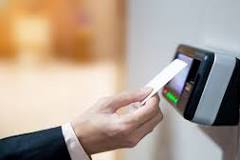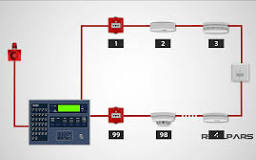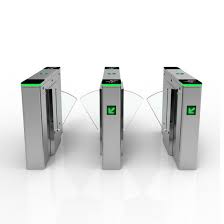Physical access control is a crucial aspect of ensuring the security and safety of buildings, premises, and sensitive areas. It involves implementing various measures to regulate and monitor the entry and exit of individuals into a physical space. By restricting unauthorized access and managing the movement of people within a facility, physical access control plays a vital role in preventing security breaches, theft, vandalism, and other potential threats.
There are several components that make up a comprehensive physical access control system. These include:
- Access Control Readers: These devices are used to authenticate individuals seeking entry by scanning credentials such as key cards, biometric data (fingerprint or iris scans), PIN codes, or RFID tags.
- Access Control Panels: Centralized units that process authentication information from readers and determine whether to grant or deny access based on predefined rules and permissions.
- Locking Mechanisms: Physical barriers such as electronic door locks, gates, turnstiles, or barriers that restrict access to authorized individuals only.
- Monitoring Systems: CCTV cameras, motion sensors, alarms, and other surveillance equipment that provide real-time monitoring of access points and alert security personnel to any suspicious activities.
- Integration with Other Security Systems: Physical access control systems can be integrated with other security technologies such as intrusion detection systems, fire alarms, and video surveillance for enhanced protection.
Effective physical access control not only enhances security but also offers operational benefits such as improved visitor management, employee tracking, and audit trails for monitoring access activities. Organizations across various industries rely on robust physical access control solutions to safeguard their assets, data, employees, and visitors.
As threats to security continue to evolve in today’s dynamic environment, investing in advanced physical access control systems becomes increasingly important. By leveraging cutting-edge technologies and best practices in access control management, businesses can create secure environments that promote safety, compliance with regulations, and peace of mind for all stakeholders.
In conclusion, physical access control is an essential component of any comprehensive security strategy. By implementing the right combination of technology, procedures, and protocols tailored to specific needs and risks, organizations can establish a strong defense against unauthorized intrusions while enabling smooth operations within their facilities.
Enhancing Security: 6 Essential Tips for Effective Physical Access Control
- Use access control systems to restrict entry to authorized personnel only.
- Implement biometric authentication methods for added security.
- Regularly review and update access permissions based on employee roles and responsibilities.
- Monitor and track access logs to identify any suspicious activities or unauthorized entries.
- Secure physical entry points such as doors, gates, and windows with reliable locks and alarms.
- Train employees on the importance of physical access control measures and best practices.
Use access control systems to restrict entry to authorized personnel only.
One of the key tips for effective physical access control is to utilize access control systems to limit entry to authorized personnel only. By implementing access control readers, panels, and locking mechanisms, organizations can ensure that only individuals with valid credentials or permissions are granted access to specific areas within a facility. This proactive measure not only enhances security by preventing unauthorized entry but also helps in maintaining a secure and controlled environment where sensitive information, assets, and resources are protected from potential threats.
Implement biometric authentication methods for added security.
Implementing biometric authentication methods for added security is a highly effective tip in enhancing physical access control measures. Biometric technologies such as fingerprint scanning, iris recognition, and facial recognition offer a high level of accuracy and reliability in verifying the identity of individuals seeking access to restricted areas. By requiring unique biological traits for authentication, organizations can significantly reduce the risk of unauthorized entry and impersonation, thereby strengthening overall security protocols. Integrating biometric authentication methods into access control systems not only enhances security but also provides a seamless and convenient user experience for authorized personnel.
Regularly review and update access permissions based on employee roles and responsibilities.
Regularly reviewing and updating access permissions based on employee roles and responsibilities is a critical tip for effective physical access control. By aligning access levels with specific job functions, organizations can ensure that individuals have the appropriate level of access to areas and resources necessary for their duties while preventing unauthorized entry into restricted areas. This practice not only enhances security but also promotes operational efficiency by minimizing the risk of data breaches, theft, or other security incidents resulting from outdated or excessive access privileges.
Monitor and track access logs to identify any suspicious activities or unauthorized entries.
Monitoring and tracking access logs is a critical tip in physical access control to identify any suspicious activities or unauthorized entries. By regularly reviewing access logs generated by the system, security personnel can detect anomalies, unusual patterns, or attempts to breach security protocols. This proactive approach allows for timely intervention, investigation, and mitigation of potential security threats before they escalate. By staying vigilant and responsive to access log data, organizations can strengthen their overall security posture and maintain a safe and secure environment for their premises and assets.
Secure physical entry points such as doors, gates, and windows with reliable locks and alarms.
To enhance physical access control, it is crucial to secure entry points such as doors, gates, and windows with reliable locks and alarms. By installing high-quality locks and alarm systems, organizations can effectively deter unauthorized access attempts and quickly detect any breaches. These security measures not only act as a barrier against intruders but also provide real-time alerts to security personnel, enabling prompt response to potential threats. Ensuring the integrity of physical entry points is a fundamental step in bolstering overall security and safeguarding valuable assets within a facility.
Train employees on the importance of physical access control measures and best practices.
It is essential to train employees on the significance of physical access control measures and best practices to ensure a secure and protected environment. By educating staff members on the importance of following access control protocols, handling credentials responsibly, and recognizing potential security risks, organizations can empower their workforce to actively contribute to maintaining a safe workplace. Training sessions can cover topics such as the proper use of access control systems, reporting suspicious activities, and adhering to security policies to foster a culture of vigilance and accountability among employees. Investing in employee training not only enhances overall security posture but also cultivates a sense of ownership and responsibility for safeguarding the premises and assets of the organization.




